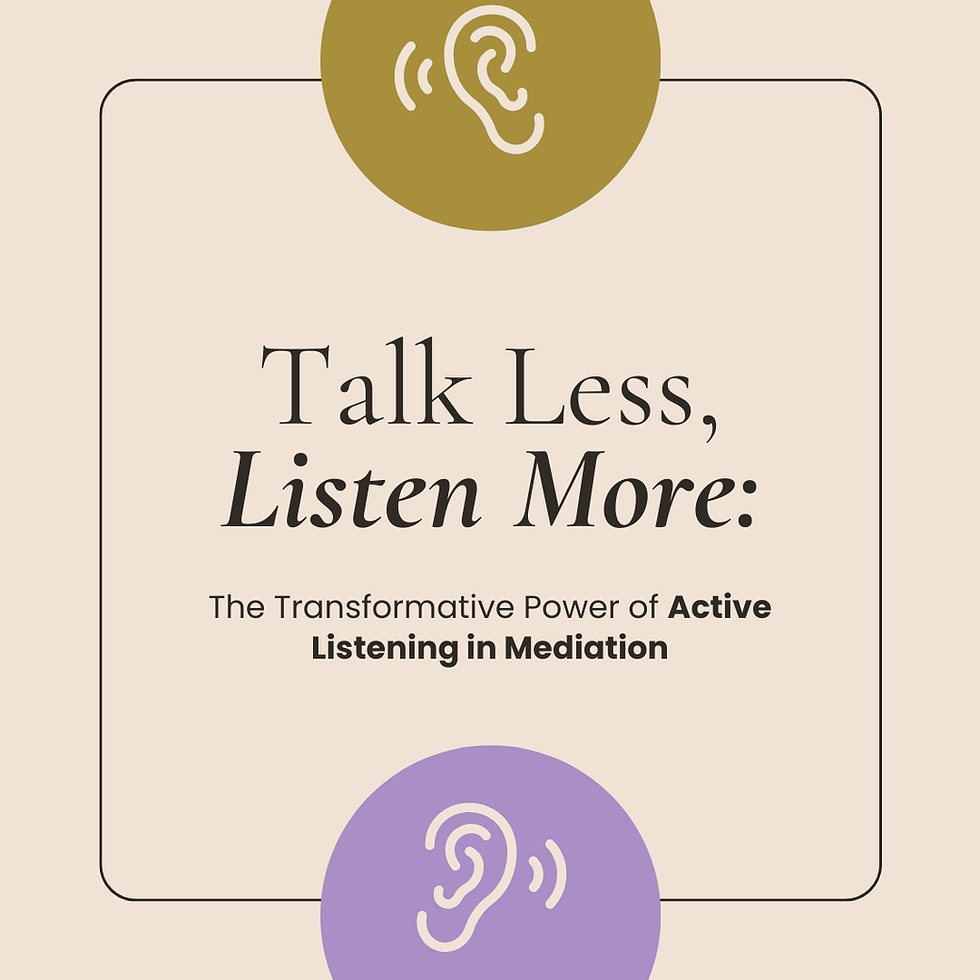Choosing the Right Platform for Mediation: Virtual vs. In-Person
- Jana de Waal

- Apr 14
- 2 min read
In today’s world, mediation no longer needs to happen around a table in a boardroom. With the rise of virtual platforms, family law mediators now have more flexibility than ever in how they bring parties together. But with that flexibility comes a new layer of decision-making: What is the right platform for this mediation?
The answer isn't one-size-fits-all. Choosing between virtual and in-person mediation depends on several factors, and getting it right can mean the difference between constructive dialogue and complete derailment.
Let’s break down the key considerations that help mediators find the “just right” platform.
1. Complexity of the Case
Some matters are relatively straightforward—think minor adjustments to a parenting schedule or a single financial issue. These cases may be perfect for a virtual format, where parties can quickly join from home.
But more complex cases, especially those involving large volumes of documentation, financial intricacies, or multiple stakeholders, may be better suited to in-person mediation. Face-to-face interactions can help clarify details and keep the process focused when there’s a lot at stake.
2. Emotional Readiness of the Parties
This is a big one.
If parties are amicable and can sit across the table without escalating into conflict, in-person mediation can foster trust and humanize each side’s story. Physical presence often leads to deeper engagement and empathy.
But if there’s high conflict, trauma, or a history of abuse or intimidation, virtual mediation is usually the safer choice. It creates immediate boundaries. The mediator can swiftly move participants into breakout rooms if needed, and a virtual setting protects victims from physical proximity with an abuser.
3. Logistics and Accessibility
Virtual mediation shines when time, geography, or scheduling are tight. It eliminates travel, cuts down on costs, and can be more accommodating for people with physical or mobility challenges. It also allows parties to participate from wherever they feel most comfortable.
That said, not everyone has reliable internet or access to private space, and not every party is tech-savvy. Mediators must assess whether each participant can meaningfully engage on a virtual platform.
4. Privacy and Confidentiality
In-person settings offer more control over who is in the room and what’s being heard. Virtual mediation opens the door to unknown third parties being present off-camera, or sensitive information being overheard in shared spaces. Mediators must address confidentiality explicitly and check who else might be within earshot.
5. Cost and Convenience
Let’s face it: virtual is often more affordable. No boardroom rental, no travel expenses, no time off work. For parties with financial constraints—or when mediation needs to happen quickly—virtual sessions are often the most accessible and practical option.
Final Thoughts: It’s Not Either/Or
Sometimes, the best approach is a hybrid. Maybe the initial session happens virtually, but a follow-up meeting takes place in person. Or one party attends in person and the other joins virtually.
A skilled mediator tailors the format to the parties and the conflict. The goal is always to foster equanimity—a state of balance where resolution can happen. Choosing the right platform is the first step toward that.




Comments